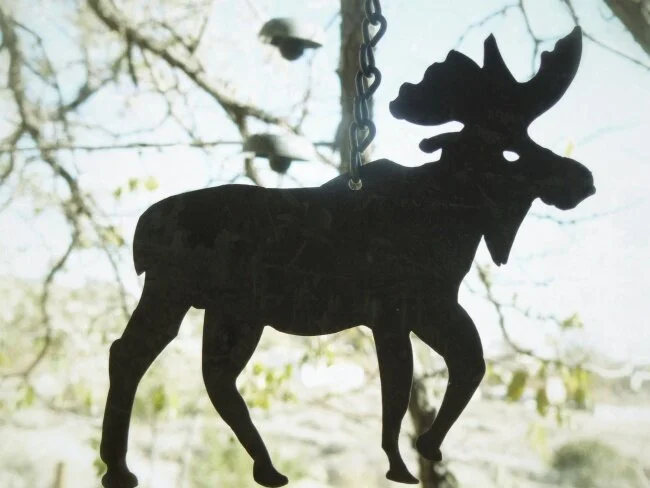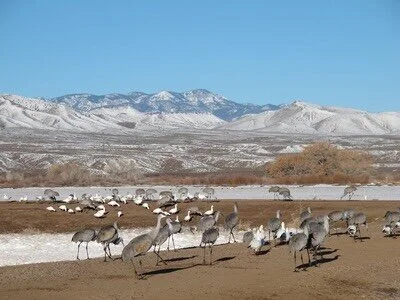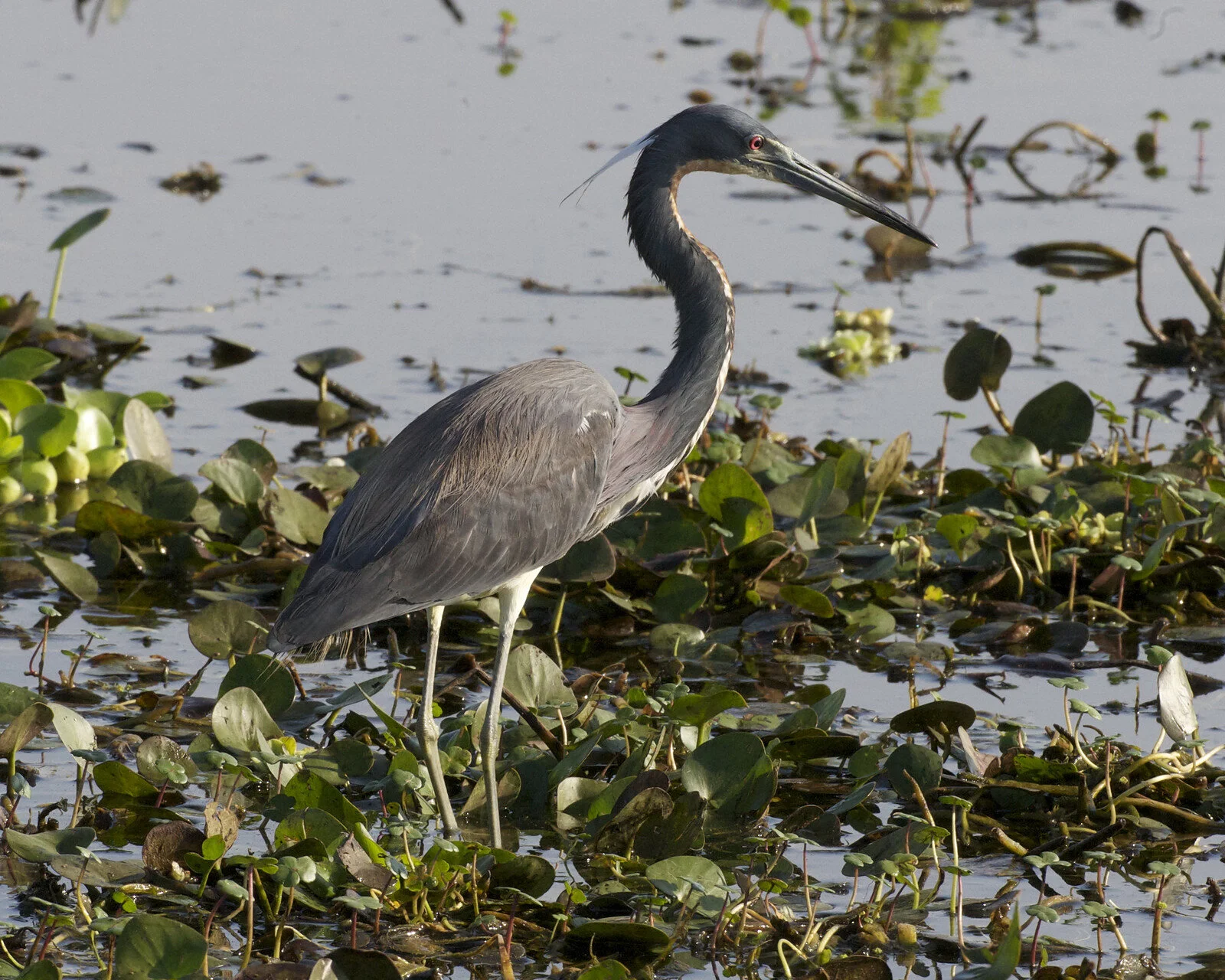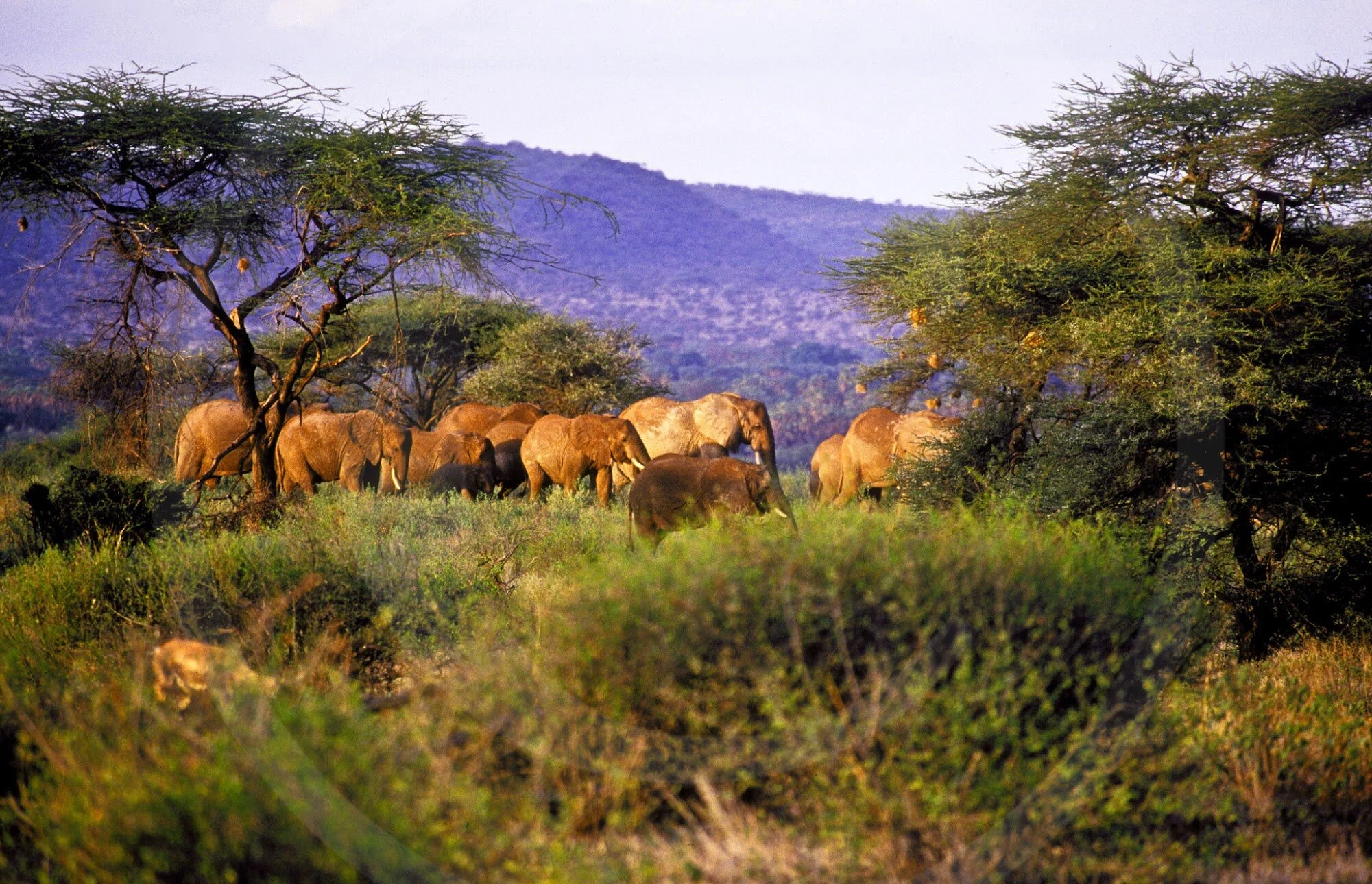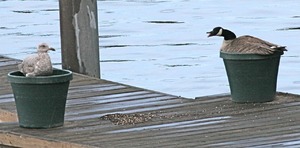Launching a small-scale drone program to aid the fight against wildlife poaching in northern Tanzania presents challenges beyond the technology for Mike Chambers and a team at Mkomazi National Park.
All in Wildlife
Into the Jungle
A visit to Calakmul Biosphere Reserve, a cultural and natural UNESCO World Heritage Site in Mexico’s Yucatán Peninsula, takes Carolyn Handler Miller deep into the Maya jungle where she discovers a vibrant ancient culture living intimately with their environment.
Bhitarkanika Sanctuary: An Indian Getaway Into the Wild
The darkness of the night and the troublesome roads were worrisome, and at first it was a relief to get out of the car, but then the destination itself proved to be a scary proposition. Our ferry in the moonless night looked sinister. And when we thought about the fact that we had entered the terrain of ferocious crocodiles, the scene in front of me seemed straight out of the famous Anaconda movies. The lone lantern lighting the boat and the stillness of the water around us felt menacing. At first, most of us laughed to ward off our fear.
And then none of us spoke. Did we fear waking the reptiles? I do not quite know for I had become too numb to think coherently. Do not mistake me; I am not one of those who succumbs to fear very easily. But when it came to the prospect of being eaten by crocodiles, my mind became my own worst enemy. I kept repeating to myself that the creek was full of salt water crocodiles and I kept replaying the visuals of the Anaconda movie. In retrospect, and with objectivity, I can say that the boat ride was actually peaceful and serene.
An Expert Hacker in Amazonia
I am a hiker. But at home, no one uses a machete to blaze the trail prior to walking on it as Souza, our Amazon guide, did, creating a path in the overgrown rainforest step by step. Slicing, swatting, swooping, chopping, no branch, bush, vine or twig was safe.
The hike was one of four daily activities during an 8-day adventure exploring Amazonia. Calling the Tucano, a 16-passenger riverboat, home, my husband and I traveled more than 200 miles along Brazil's Rio Negro. For daily excursions, we clamored aboard a small power launch which took us hiking, bird-watching, and village hopping, and on night-time outings that dramatized the allure of the river not experienced in any other way.
Wild Moose Chase
Story and Photos by Jean Kepler Ross
“Brake for Moose - it could save your life” - the road sign in Maine promised. My cousin Julie and I toured New England in the Fall and we were excited at the prospect of viewing moose. Unfortunately, they were proving to be elusive.
The road signs were encouraging: “Moose - next 3,000 feet,” “Moose next 4,000 feet,” and “Moose - next 9 miles.” Finally, we saw a moose: a metal moose sculpture hiding in the grove of trees next to a scenic waterfall in Rumford, Maine. I began quizzing the locals to find out how we could maximize our chances of seeing the actual animal.
by Fyllis Hockman
"It can be a difficult journey. If you have a cold, cough or sniffle, don’t even bother lining up. Good hiking boots and a walking stick are a must. Bring plenty of water. Be sure to stay at least 25 feet away. Remember these are wild animals. If we need to carry you out, that will cost an extra $300."
I was already intimidated by the pre-trek briefing and we hadn’t even started on our mountain gorilla expedition, which was part of a 16-day tour to southwestern Uganda sponsored by ElderTreks. The 25-foot rule, I learned, was for both their protection and ours. Sharing 98.4 percent of our DNA, the gorillas are very susceptible to human-borne illnesses. We were carriers and they had to be protected from us. They were wild animals and we had to be protected from them. A fair quid pro quo. Thus, eight humans a day are allowed to visit a gorilla group for no longer than an hour. Works for us; works for them.
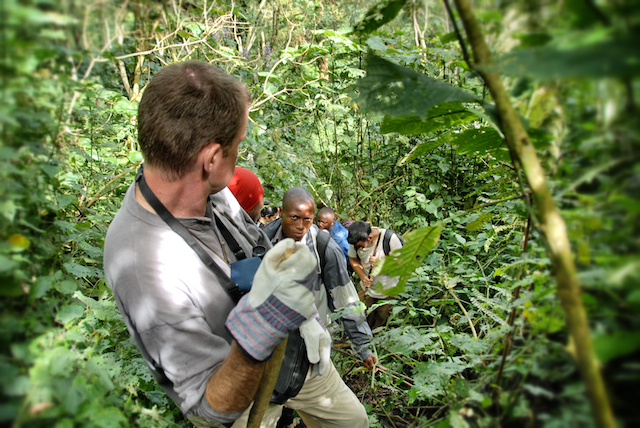 Gorilla trekkers ascending one of many steep climbs.
Gorilla trekkers ascending one of many steep climbs.
This is not exactly a drive-by photo op. With a vigorous trek of 1-7 hours, depending upon where the gorillas are that day, you have to REALLY want to see them. But even with visitation restricted to an hour, it is usually well worth the effort.
Eyelids closed, I postpone viewing the new day. I linger in dreamtime until a familiar honking breaks the morning stillness in Benicia, California, a waterside community thirty miles north of San Francisco. The world outside my window rests under the great Pacific flyway, the north-south path of North American migratory birds.
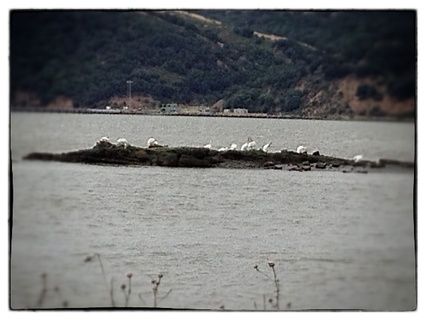 Eyes wide open; I peer through the bedroom window in time to see Canada geese, a trio in flight, noisily bound elsewhere, calling to one another, beaks pointed, necks stretched; chests lifted upward, wings flapping hard. I track their flight over Southampton Bay, the cove on Benicia’s west end. The pale gray clouds of the marine layer blanket the opposite shore of the Carquinez Strait. This wide watery ribbon funnels fully half of California’s water drainage through a deep channel on its way to the Pacific Ocean.
Eyes wide open; I peer through the bedroom window in time to see Canada geese, a trio in flight, noisily bound elsewhere, calling to one another, beaks pointed, necks stretched; chests lifted upward, wings flapping hard. I track their flight over Southampton Bay, the cove on Benicia’s west end. The pale gray clouds of the marine layer blanket the opposite shore of the Carquinez Strait. This wide watery ribbon funnels fully half of California’s water drainage through a deep channel on its way to the Pacific Ocean.
Cuddling under a soft, embroidered, cotton quilt, while I marvel at the waterfowl, Franz Kafka’s translated words come to mind.
You do not need to leave your room.
Remain sitting at your table and listen.
Do not even listen, simply wait, be quiet, and solitary.
The world will freely offer itself to you to be unmasked,
it has no choice, it will roll in ecstasy at your feet.
The universe blesses Benicia with a significant year-round presence of waterfowl—mallards, coots, the great blue heron, and snowy egret. Spring brings an upswing in activity: nesting and the annual migration of some birds to points north.
The Bosque Is For The Birds
words + photos by Laurie Gilberg Vander Velde
“Maybe I will go to the car and get my tripod,” I said to my husband. We were at the edge of a mostly frozen pond, standing on snowpack, bundled up against the 19 degree cold in the pre-dawn dark. A glimmer of light was starting to show in the sky. We had staked out a spot in the line of tripod-wielding photographers with their mega-humongous lenses We were all waiting for the awakening snow geese and sandhill cranes to perform their morning “fly out.” We were at Bosque del Apache, a National Wildlife Refuge near San Antonio, New Mexico about an hour south of Albuquerque. It’s a place known to many serious bird watchers who throng to the area in the winter to watch thousands and thousands -- and thousands of snow geese and sandhill cranes come and go.
 We are not avid birders, nor am I a zealous photographer. How could I be? I love taking pictures and dabble in PhotoShop, but I tote a point-and-shoot camera. It’s top of the line and somewhat flexible, but it’s still a point-and-shoot, and the SLR crowd look at me with some disdain. Much as I would love to use a digital SLR and be able to change lenses, my body just can’t schlepp that much weight. And my husband, despite my batting my eyelids at him, has turned me down flat. It was hard not to be intimidated by the very serious looking phalanx of expensive equipment lined up on tripods waiting for “the moment.”
We are not avid birders, nor am I a zealous photographer. How could I be? I love taking pictures and dabble in PhotoShop, but I tote a point-and-shoot camera. It’s top of the line and somewhat flexible, but it’s still a point-and-shoot, and the SLR crowd look at me with some disdain. Much as I would love to use a digital SLR and be able to change lenses, my body just can’t schlepp that much weight. And my husband, despite my batting my eyelids at him, has turned me down flat. It was hard not to be intimidated by the very serious looking phalanx of expensive equipment lined up on tripods waiting for “the moment.”
Our home is now in Santa Fe, so we made the easy two plus hour drive to the Bosque (means “forest” in Spanish) the night before, aiming to get there in late afternoon in hopes of seeing the “fly in.” This is the time during the golden hour before the sun sets and the moments after sunset when tens of thousands of snow geese and sandhill cranes fly in. A foot of snow had closed the refuge a couple of days before, but the plows had sort of cleared the roads. The observation decks were still snow covered. The big problem was that there were limited areas of open, unfrozen water in the ponds, and the birds want to land on open water where they are safer from predators. The helpful folks at the visitors’ center can tell you where the birds landed the night before, but the birds don’t file a flight plan, so we can only guess where they might land tonight.
You might characterize me as a casual birder, which is one-step up from an armchair birder. I am married to a man who once headed the Sapsucker team for the Cornell Lab of Ornithology in the World Series of Birding so just through sheer osmosis I should be a much better birder than I am. But that would mean I’d have to pay attention.
Nicaragua: Can you keep a secret?
words + photos by Ellen Barone
Here's the truth: I want to tell you about Nicaragua and its wild, deserted Pacific beaches, active volcanoes, colonial cities, coffee plantations, and verdant mountains— but then again, I don't.
Writing about delicate cultures like Nicaragua, where complex political, geographical and economic realities have resulted in hardships on one hand - and a simpler, more grounded way of life on the other - always brings up mixed feelings in me.
Travel Is For The Birds
The last time I was in Bali, I stayed with a friend on the outskirts of Ubud, up in the foothills. I kept hearing about a fabulous heron/egret rookery where the birds came in by the thousands to roost in the trees for the night. I wanted to see the spectacle and my time to go was growing short, so I succumbed to a spontaneous urge late one afternoon, borrowed my friend’s bike and took off down the lane through the rice fields.
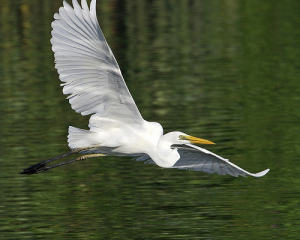 I found the rookery, a few miles away in Petulu. The roosting was a spectacular scene as wave after wave of the showy wading birds arrived and competed for space in a squawking, flapping ritual.
I found the rookery, a few miles away in Petulu. The roosting was a spectacular scene as wave after wave of the showy wading birds arrived and competed for space in a squawking, flapping ritual.
I hadn’t figured on how dark it is at night in Petulu, which I discovered as soon as the sun set. No street lights, no light on the bike, no one knew where I was and I didn’t have a cell phone on me. It was pitch black and I was sorry I hadn’t planned better. I was saved by a local guide on a motorbike and his Australian client - they led the way and I followed their light as they guided me home.
Why had I been so reckless? How did I become such an enthusiastic bird watcher? I was afraid of birds in my childhood. I grew up on a farm in Iowa and it was my duty to collect the mail from the mailbox out by the road. In the summer, I was terrorized by baby black birds that fell out of the trees and, in their terror of me approaching across the broad, grassy lawn, would suddenly flap and screech and scare me.
Later, I lived near wonderful woods in Ohio, walked there often and learned to know the wildflowers. Then, I wanted to know the name of the brilliant blue bird I saw diving into a stream, so I got a birding guidebook and signed up for a birding class. I also realized that birding is a great way to learn about other places and that I could see a wide variety of birds in the course of my travels.
This time of year when I drive along the road toward the school – the road I know like the back of my hand because I’ve been traveling that road for fifty years – I always notice the starlings on the wire. As the weather turns and the nights get cool and the purple asters and yellow goldenrod fight for space in the meadows, the starlings begin to gather. First there are just a few, balanced precariously, claws gripping the telephone wire as they sway in the wind. But soon it’s like a party up there with hundreds of birds chit-chatting as they cling to the now-drooping wires.
Kenya: Rules of the Wild
words + photos by Ellen Barone
It was a few days into my first African safari when I learned the Fourth Rule of Safari Travel: When you think you’ve spotted a lion, casually ask the guide “What’s that?” rather than blurt out “There's a lion!” because 9 times out of 10 the ‘lion’ will be a termite mound.
Later on, I’d learn other rules: No. 7, If you’re squeamish about eating flesh avoid restaurants with the word Carnivore in their title; No. 13, Never run out of the safari tent, half naked, screaming “there’s a creature in my bed” before you’ve determined it isn’t a hot water bottle put there by the room steward to take the chill off a high-altitude night; and No. 17, Avoid standing up suddenly in an open-top Land Rover with a metal roll-bar above your head.
Newfoundland: Three Lifetimes in Three Days
by Jules Older
I'm a travel writer, which means I'm a hit-and-run artist — New Zealand’s North Island today, the southern Sierra tomorrow. I'm the man who rarely returns.
Except to Newfoundland. I've been five times to Canada's easternmost, poorest and most interesting province. That chunk of rock in the North Atlantic, closer to Ireland than to Vancouver, 1,600 miles east of New York, captured my heart an hour into my first visit.
On the latest visit, I experienced three lifetime thrills in three consecutive days. Where else on earth can you do that?
THRILL ONE: ICEBERGS
It began in the tiny town of Springdale, where we hooked up with ace pilot Rick Adams, owner-operator of Springdale Aviation Ltd.
I flew over and around massive icebergs making their way south from Greenland. Never before had I seen a berg, and now they were scant yards below the Cessna 185's wing.
But if iceberging from a low-flying plane is a thrill, berging from a sea kayak is a life event. Because sea kayaking has a very steep learning curve -- you can be moderately proficient in an hour or so -- and because icebergs have a tendency to get stuck just offshore in the province's protected harbors, the experience is open to the many rather than the fit few.
It's a stunning experience. I drove over a hill and down into an outport, Newfoundland for coastal village. My heart thumped a little louder as I spotted the gleaming white of half a dozen icebergs towering above the dark water like dollops of cream on a chocolate cake. I couldn't wait to haul the kayak off the roof of the van.
by Judith Fein
As the holiday of hearts approaches, you’re probably thinking long-stemmed roses served on a breakfast tray in a 5-star hotel. Then, hmmm….snuggling, doing the love thang, champagne, chocolate, doing the love thang again, bundling up for a hand-holding stroll, dinner, a show and home again. The odds are slim that your amorous thoughts turn to things that creep and crawl and fly. But what if Cupid inspired you to do just that—think of animals for Valentine’s Day? One equatorial word immediately leaps to the lips: Galapagos.
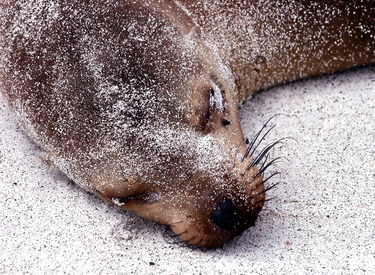 So how, you wonder, can blue-footed boobies compete with bubbly and sinking your fork into a one-pound crustacean swimming in garlic butter on your plate?
So how, you wonder, can blue-footed boobies compete with bubbly and sinking your fork into a one-pound crustacean swimming in garlic butter on your plate?
The great Galapagean secret is that it’s no longer an either-or proposition. The entire crew of a ship can pamper you and your honey while you float toward the remote islands that young Charles Darwin visited in 1835. It’s no wonder it took him five years to collect his thoughts and formulate his theory of Evolution and survival of the fittest. Poor Charley had to recover from his years on board the Beagle, where he suffered continually from the agony of sea-sickness. Although your cruise may not result in a great scientific breakthrough, your ship will be stabilized, you will not be tossing your petit fours, and you will be in the mood for unusual forms of aquatic and terrestrial love.
My husband, who is a thoroughbred romantic, booked us in a deluxe room on the l00-passenger Explorer II. I had visions of walking single-file down a dark, narrow, creaking corridor and ducking into a stateroom with a metal floor and a Murphy bed. Ah, how little I trusted my Valentine. The corridors were broader than some state roads, and the doors all shone with mahogany finishes. Our room was carpeted, had real drapery, a huge bed, a video console, chocolates on our pillows, and—was I dreaming?—the room steward made up the room at least three times a day. Before bed, he twisted our yellow beach towels into the shapes of different Galapagos animals. I think my fave was the turtle with mints for eyes.
I’ll concede that it’s not love-inducing to get up at 6:45 a.m. every morning, but you have to take a ponga (a motorized skiff) to shore to greet the fauna before they go food-hunting. The upside is that there are several breaks during the day when you can slip off into your stateroom for a quickie, and everyone is too busy talking about the animals they’ve just seen to notice.
February 14 is a day for love, and if you visit the Piedras Blancas bluffs near San Simeon, California on that day, you will see more love-making on the beach than ever before.
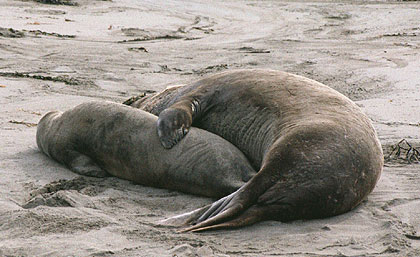 That’s right. I’m talking northern elephant seals. As I write (January), the adult females are birthing pups, and the way the gulls are bounding about the beach cleaning up the birthing mess, it looks like popcorn gone mad with wings. The 2010 female and pup count far exceeds the last two years, according to stats taken by Brian Hatfield, the marine biologist on site.
That’s right. I’m talking northern elephant seals. As I write (January), the adult females are birthing pups, and the way the gulls are bounding about the beach cleaning up the birthing mess, it looks like popcorn gone mad with wings. The 2010 female and pup count far exceeds the last two years, according to stats taken by Brian Hatfield, the marine biologist on site.
Thousands of visitors from around the world flock like the gulls for the unique opportunity to watch these migratory seals give birth on the beach. Birthing takes place once a year during the winter months, after the females make a 2500-mile migration from open sea to the Piedras Blancas rookery.
How does this relate to Valentine’s Day? First, let me explain that female northern elephant seals are pretty much bare-flippered and pregnant most of their lives. So, after the female gives birth, she nurses her pup for about 28 days. (The 70- pound pup will weigh in at over 300-pounds when it’s weaned.) She’ll turn her back on the little guy and (OMIT) now contend with a two-ton love machine, because she is now in estrus.
Most births occur around mid-January, consequently supplying harems of females-in-estrus on February 14. The alpha bulls, many weighing in at two-tons and about 16-feet long, have waited all year for this. And because any given northern elephant seal bull has less than a 10% chance of ever breeding in its lifetime, they take this seriously.
words + photos by Alan Fritzberg
OMG. There’s a goose sitting in a flowerpot on the neighbor’s dock! There began a month plus of watching a goose nesting in what would seem like an odd, very visible and seemingly vulnerable location for the process on the shore of Lake Whatcom in Bellingham, Washington.
My 1950s boyhood memories of Canada geese are of my father dreaming of seeing one close enough to have a shot at. Near our house between Bellingham and the Canadian border they were usually seen only high overhead.
Nowadays, as we all know, geese are seemingly everywhere there is water and, especially, freshly cut grass.
The geese we see in our area are nonmigratory residents, thanks to the U. S. Department of Fish and Wildlife. In response to declining goose populations in the first half of the 20th century, eggs were incubated separately from parents so the goslings could be raised without being taught to migrate. Success in this recovery endeavor was defined as improved hunting opportunities.
Being in the habit of shooing geese off the property, how should I react to a goose that has decided to nest in a large flowerpot on a neighbor’s dock? My first inclination was to move the goose along to the next grassy yard.
Our neighbor who put the flowerpot on the dock was excited to see a goose sitting in it. I realized it was not my role to call a halt or try to figure out how to oil the eggs or whatever one does to un-fertilize them in order to make a small impact in retarding the population growth of our western resident Branta Canadensis moffitti.
Questions Arose
Was the goose a young first timer and didn’t know any better? Could it actually nest in a 15-inch diameter flowerpot and incubate eggs to hatching status? Was it vulnerable in so conspicuous a spot?




